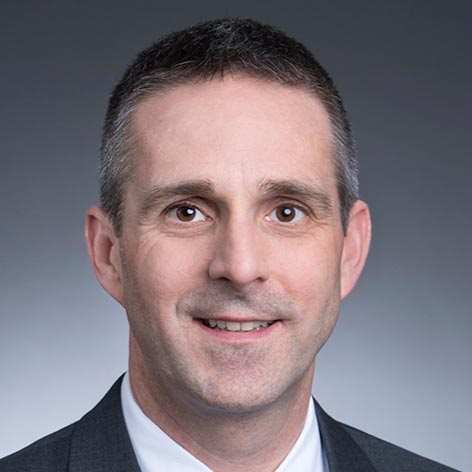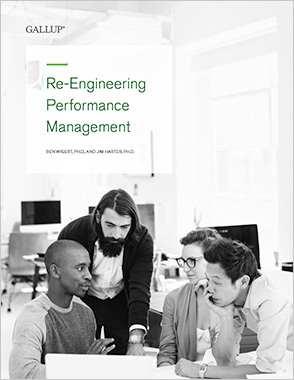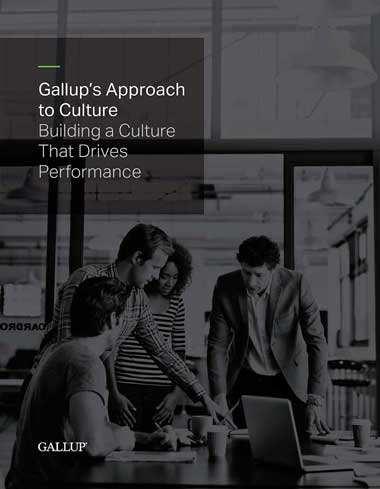A Conversation With Stefan Seiler

Stefan Seiler
Group Head Human Resources at UBS
UBS, the Zurich-based global bank, recognizes the knowledge and networks of talented, well-developed employees as corporate assets -- and knows that a workplace culture of internal mobility leverages that value.
"UBS can only outperform its competitors if we are able to bring the whole bank to our clients," says Stefan Seiler, Group Head Human Resources at UBS and adjunct professor of leadership and strategic human resource management at Nanyang Technological University's Business School in Singapore. "It's much easier to deliver the whole bank to clients when you've worked in different areas of the organization. And internal hires certainly trump external hires in bringing institutional knowledge and an internal network."
However, a 2017 UBS employee survey found only 57% of employees responding favorably to questions related to the learning and career opportunities available at the firm. Consequently, UBS Group CEO Sergio P. Ermotti made internal mobility and talent development a priority and the HR leadership team made it their objective. In less than two years, the team launched an extensive development and mobility initiative that came to change the way the bank drives leadership, learning, and feedback, a program anchored by a standout internal mobility product -- the Career Navigator.
The Career Navigator is an online platform that allows UBS employees to search for open positions and UBS recruiters to search for internal candidates. It calculates an employee's fitness for each role, highlights options employees may not have considered before, links to learning opportunities to fill any gaps, and lets people apply for positions direct from the platform -- and 120 employees already have.
But as extraordinary as the Career Navigator is, its success is a product of UBS's cultural concept of leadership, learning, and feedback. "The technology is certainly an enabler," Seiler explains in the following CHRO Conversation, "but it is nothing without a strong mobility culture."
Emond: What advantage does internal mobility give UBS? Some leaders lean more toward outside hires, especially for higher level positions.
Seiler: If you move from one division to another, you'll maintain and grow your internal network. Gaining experience across the front, middle, back and control functions develops a much more holistic picture of the firm. UBS can only outperform its competitors if we are able to bring the whole bank to our clients. But two years ago, our employees gave us clear feedback that there was not enough openness to internal career moves or learning opportunities for career growth.
So our question was: how do we open up and become an organization of cross-functional moves? And even, how do we become an organization that thrives from cross-functional moves?
We realized that it was not enough to simply focus on the basics of talent management, such as potential evaluation, succession planning and key talent identification. Whilst important, this would not change the culture to mobilize our employees and managers to make internal mobility a priority. A generic approach wouldn't work. So our question was: how do we open up and become an organization of cross-functional moves? And even, how do we become an organization that thrives from cross-functional moves? That led us to a dynamic approach with four clear angles: We explicitly made internal mobility a strategic priority. We focused on creating a culture of ongoing feedback. We established our learning power-house, UBS University, that fundamentally changed our approach to organizational learning. And -- arguably the most important element to creating a culture of cross-functional mobility -- we focused on line-manager effectiveness.
Emond: Gallup research shows that's exactly the right place to start.
Seiler: Whilst we expect employees to take ownership for their development, line managers play a critical role. We've seen that employees who rate their line managers positively are more likely to say they plan on staying with UBS. In our anonymous employee survey, we ask employees to rate their managers on the team's feedback culture, how inclusivity is fostered and how they support development. Every manager who has more than five direct reports -- for anonymity reasons -- is scored by their employees on each of these dimensions, and they have conversations with their own managers to plan how to improve low scores or maintain high ones. This underlines the importance of feedback.
Emond: Feedback as in a performance review? Or do you mean a more ongoing conversation?
Seiler: Both. Like many organizations, we do have a standard performance management process with mid-year check-ins and a structured year-end review. This structure is important to us for many reasons, especially as it's connected to how we reward employees. But we wanted to strengthen our feedback culture to move away from the mentality that feedback was only a twice-a-year thing. So we mobilized the whole organization to continuously give, receive and ask for feedback. It becomes a standard part of our ongoing improvement mentality.
Emond: And you mentioned that you substantially changed your learning platform too, right?
Seiler: We also took a new approach to our learning offering by creating a one-stop shop for all learning activities. Previously our learning offering was scattered, offered to employees through multiple platforms, resulting in duplication in our offering, and it was also hard for employees to find what they were looking for. We overhauled and restructured the curriculum. We organized it by how much time employees have for learning, the topic they want to look at, and what they need to learn for their current role as well as for a future role they might have their eye on.
We now offer less in-person and more digital training. And it's much better curated, too. When you look for a learning opportunity for a particular skill or role, you get straight to the right place, rather than having to browse through 500 potential options. We've increased the monthly hit rate on our learning page by a factor of 12.
So we have significantly increased the quality and quantity of learning happening across the organization. We also have a much better understanding of what type of learning is happening as well. For example, we can look at what our top performers in a particular role are typically learning, and then make our learning recommendations to everybody in that role based on that.
Emond: In all of Gallup's workplace research, one of our biggest findings is that very few companies have a culture of development like yours or make it easy to change jobs. In fact, our data shows that 91% of people who say they've recently changed jobs had to leave their company to do it because they were not provided enough opportunity in-house. So what you're on to there is not usual. Did this change your score in the benchmark database?
Seiler: All in all, these actions have had a significant positive impact. Our talent management score in our employee survey increased 10 percentage points -- now 67% of our employees say we offer the right opportunities for talent to learn and develop in-house. This is above the benchmark in financial services and even for high-performing organizations. This is an outstanding achievement.
This is proof that our new initiatives are having a real impact. I always say it's a combination of art and science. Science, because we measure the impact of what we do. So we've generated a lot of data-driven insights through this process that help ongoing improvement.
We have significantly increased the quality and quantity of learning happening across the organization. We also have a much better understanding of what type of learning is happening as well.
And there's an art to it as well. I believe it matters a lot how you orchestrate all these activities, how you sew them together so that the overall picture makes sense to the employee. It can't be an independent set of activities. It has to be an integrated whole, resulting in an employee experience that fully supports internal mobility, talent development and learning opportunities.
Emond: Which brings us to the Career Navigator.
Seiler: Absolutely. Our Career Navigator has three key capabilities.
The first capability allows you to match yourself against the role you have in mind. So, let's say you were thinking of becoming a desk-head, or a project manager or a business manager. You enter your resume, pick the role you're interested in, then the Career Navigator helps you do a self-assessment. If you, for instance, match 75%, the Career Navigator tells you where you have gaps, such as problem-solving or analytical thinking. Based on this, the tool leads you directly to the modules on the learning platform to best help you address these gaps. You can start right then, or you can put it on your learning list.
It gives you the full spectrum, from, "I have an idea of what I want to do," to "How good is my fit there?" to "What are my gaps?" to "Here are the specific trainings to help me close that gap." And if you make the move into that position, you can allow other people to contact you to ask, "Hey, can you tell me what that job's like?" or, "I'm thinking of a similar move -- what was it like for you?"
There is also a "recent moves" functionality. Alongside the most popular internal moves, you can see the most popular moves for a person in your role. This is all built on the last three years of internal mobility data. So, if you don't have a clear idea where you want to go next, you can get inspired by others before you. This is another great way for you to continue your UBS career!
Emond: This is certainly on the leading edge of what companies are doing.
Seiler: I think so too. And it offers more: the Career Navigator matches resumes to whatever open roles we have. All you have to do is upload your CV into the tool. The Career Navigator then tells you which roles suit your experience and expertise, starting with the best matching role. Once again, it will highlight current open roles and any learning opportunities that would help you. This is really interesting for our employees in terms of learning new skills and considering new opportunities. Especially for junior staff, as it gives them ideas they hadn't thought about.
We're using the Career Navigator from two angles. Every employee can see how they match to a potential role -- and recruiters also have access to help source internal talent for open roles. That's why we have a big resume and data collection exercise going on. We can use all types of data to understand employees in a digital way. Our recruiters can upload the role into the system and find the internal people who would be a good match. And the algorithm is continually learning and improving. Every time we recruit someone through this process, the AI learns which skills and capabilities are the ones driving the successful candidates.
Internal mobility needs to be very well embedded into the overall framework of the organization culture. The different pieces need to work well together. The technology is certainly an enabler, but it is nothing without a strong mobility culture.
The third capability is an assessment for those who really want to understand themselves better. The outcome is a detailed description of your strengths and development areas, along with a recommendation of learnings and roles you'd be a good fit for.
Emond: How long has the Career Navigator been up and running?
Seiler: Two months. And we know that the Career Navigator has already been used 40,000 times and that 120 employees have applied to new roles through it. We can measure how much they look at the learning opportunities and how often they actually use them. It's early stages but we'll do regular updates based on usage of the tool, on the process and on the analytics. And will continually look at how we can improve the user experience.
Emond: Have you ever tested the Career Navigator on yourself?
Seiler: Of course -- I've used every functionality. But I wouldn't say this tool is best suited for mobility within top management, as the number of meaningful other roles within the organization is small. However, for the majority of our employees, I think it's a game-changer. A few years ago, I did a rotation in the audit department, all because I had a good manager. He told me, "Stefan, you're very good at what you do, but you would tremendously benefit if you would understand better what a bank does in general. So go and learn for a year how a bank operates, and you'll learn that best in the audit department."
This tool can do for everyone what my boss did for me. Development is a function of the Career Navigator -- when you want to know where you can best develop your capability for X or Y, you can ask the Career Navigator. It will tell you where you can develop these capabilities and which roles are currently open there. This was what my boss recommended, because he was thinking about my internal mobility and the skills I needed to develop. Now that's available to every employee and puts them in an ever-better position to drive their own development and generate these ideas themselves.
Having said that, I would never take away the importance of good line managers. Because, in order for it to really work, you need a manager who supports you in your internal mobility prospects. It's extremely important that, in addition to the technical capabilities we have with Career Navigator and with the structured approach we take, there is a culture that fully supports internal mobility.
Emond: Right. The mark of a good leader is developing talent and moving it out into the company.
Seiler: It's crucial. That's where I come back to the art and science of this. Internal mobility needs to be very well embedded into the overall framework of the organization culture. The different pieces need to work well together. The technology is certainly an enabler, but it is nothing without a strong mobility culture.
Explore other CHRO conversations:
- Amazon CHRO Beth Galetti
- Dignity Health EVP and CHRO Darryl Robinson
- Sanofi CHRO Roberto Pucci
- Microsoft CHRO Kathleen Hogan
- Mayo Clinic CHRO Cathy Fraser
- Roche CHRO Cris Wilbur
- ABB CHRO Jean-Christophe Deslarzes
- Roche CHRO Cris Wilbur and Global Head of Talent Innovation Tammy Lowry
- Genpact CHRO Piyush Mehta
- Schlumberger HR Chief Gavin Rennick
- Huntington Ingalls Industries CHRO Bill Ermatinger
Jennifer Robison contributed to this article, which was based on an interview conducted by Larry Emond.





